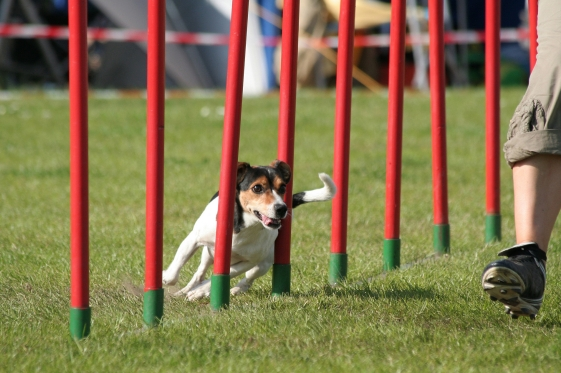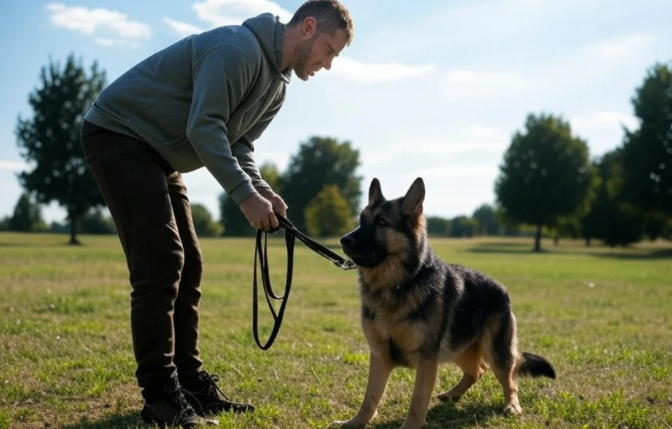How should a dog be raised? The Nobel Prize winner wrote a special book to answer you
Today, we’re tackling a common question: What do you need to know about owning a dog?
In life, knowledge is the key to solving even the toughest problems. You might think that dog ownership isn’t a high-tech skill, but even Nobel Prize winner Konrad Lorenz wrote an entire book on the subject. Today’s recommendation is his work—The Dog’s Heritage—translated by Zhang Bingjie and published by CITIC Press.

- Choosing a Dog:
Don’t get overly fixated on purebred dogs. Many people believe purebreds are cuter, but in reality, to preserve specific physical traits, purebreds are often bred at the expense of health and intelligence. This means they’re more prone to genetic diseases and may even have a slightly lower average IQ compared to mixed-breed dogs. When choosing a pet, consider also looking at mixed breeds that might not be as showy. - Heritage and Behavior:
A dog’s ancestry comes mainly from gray wolves and jackals. Breeds with more jackal heritage—such as certain small breeds like Chihuahuas and toy poodles—tend to be very dependent on their owners; however, their eagerness to approach anyone can make them more likely to get lost. In contrast, breeds with a stronger wolf lineage, like Alaskan-type dogs, tend to view their owner as a kind of pack leader. They might not obey every command, but they’re noticeably more attached to you than to strangers. - Matching Personality to Your Needs:
Different breeds have very diverse temperaments, so choose one that fits your lifestyle. If you’re looking for a gentle, affectionate companion, a breed known for its independent streak (like the Pekingese) might not be ideal. Instead, consider an Irish Setter or another gentle, long-haired, long-eared breed. If you want an energetic, lively dog, a small hound—think Beagle—could be a great option. And if you prefer a dog with a bit more wild spirit, breeds like the Boxer or a versatile terrier might be just what you’re looking for. - First Impressions Can Be Misleading:
Many people mistakenly favor puppies that immediately come off as overly friendly. However, a puppy that is too eager to greet everyone may be naturally predisposed to attach itself to anyone it meets, increasing the risk of getting lost as it grows up. - Dogs and Children:
It’s common to worry about having a dog in a home with kids. From a health perspective, if the child isn’t allergic and the dog is vaccinated, there’s little need for concern. Dogs can sense a child’s importance in the family and typically won’t intentionally hurt them. Plus, growing up with a dog gives children more chances to play outdoors, fostering a deeper understanding of nature and respect for animals. - Feeding Your Puppy:
Once a puppy is weaned, it’s best to switch to several small meals throughout the day rather than one or two large ones. You can even prepare a solution with goat milk powder to soften the puppy food before serving. Also, avoid feeding your dog human food—especially chocolate, onions, grapes, and other items known to be harmful. - Building a Bond:
The critical period for forming a close bond with your dog is around five months of age. This is when puppies are most emotionally impressionable and begin to recognize their owners. The key during this phase is to spend quality time together. For example, when feeding, try standing a little away from your dog and call its name to encourage interaction. Taking your puppy to new places can also strengthen your connection, as long as you’re by its side the entire time. - Early Training:
The first six months of a dog’s life are prime time for training. During this period, puppies are highly receptive, making it the perfect window to teach them basic commands like housebreaking, sitting, and standing up. Start with short, 5‑minute sessions to avoid overwhelming your pup, and gradually extend each session to about 15 minutes as it becomes more accustomed to training. - Preventative Discipline:
When it comes to training, consider using “preventative punishment.” You’ve probably experienced coming home to find your dog has chewed up the sofa, scolding it in anger—but the behavior persists. That’s because dogs have limited understanding and can’t link a delayed punishment to an earlier misdeed. Instead, interrupt the behavior as it begins by saying “No” immediately, so your dog learns that chewing on the sofa results in a swift consequence. If you miss the moment, you can take your dog back to the scene and explain the reason for the reprimand. - Lifetime Commitment:
Before getting a dog, ask yourself: Are you ready to care for it for its entire lifetime? Some people get a dog for a bit of fun without considering the long-term responsibilities. Since dogs can live for over a decade, deciding to bring one into your life means committing to be there for its entire journey—never abandoning it along the way.
Let’s take a moment to thank Konrad Lorenz, the author of The Dog’s Heritage, Zhang Bingjie, the translator, and CITIC Press, the publisher. And finally, here’s a nugget of wisdom to remember: owning a dog means gaining a loyal friend and forging a deep, lasting bond.






